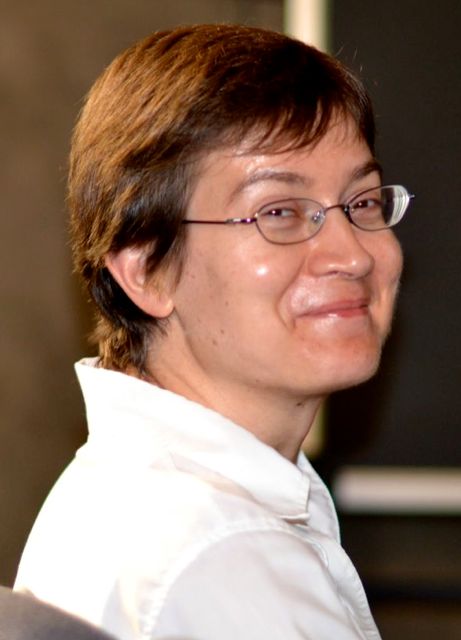Studying at the University of Verona
Here you can find information on the organisational aspects of the Programme, lecture timetables, learning activities and useful contact details for your time at the University, from enrolment to graduation.
Academic calendar
The academic calendar shows the deadlines and scheduled events that are relevant to students, teaching and technical-administrative staff of the University. Public holidays and University closures are also indicated. The academic year normally begins on 1 October each year and ends on 30 September of the following year.
Course calendar
The Academic Calendar sets out the degree programme lecture and exam timetables, as well as the relevant university closure dates..
| Period | From | To |
|---|---|---|
| I sem. | Oct 1, 2014 | Jan 30, 2015 |
| II sem. | Mar 2, 2015 | Jun 12, 2015 |
| Session | From | To |
|---|---|---|
| Sessione straordinaria appelli d'esame | Feb 2, 2015 | Feb 27, 2015 |
| Sessione estiva appelli d'esame | Jun 15, 2015 | Jul 31, 2015 |
| Sessione autunnale appelli d'esame | Sep 1, 2015 | Sep 30, 2015 |
| Session | From | To |
|---|---|---|
| Sessione autunnale appello di laurea 2014 | Nov 26, 2014 | Nov 26, 2014 |
| Sessione invernale appello di laurea 2015 | Mar 18, 2015 | Mar 18, 2015 |
| Sessione estiva appello di laurea 2015 | Jul 14, 2015 | Jul 14, 2015 |
| Sessione autunnale appello di laurea 2015 | Nov 25, 2015 | Nov 25, 2015 |
| Sessione invernale appello di laurea 2016 | Mar 16, 2016 | Mar 16, 2016 |
| Period | From | To |
|---|---|---|
| Vacanze di Natale | Dec 22, 2014 | Jan 6, 2015 |
| Vacanze di Pasqua | Apr 2, 2015 | Apr 7, 2015 |
| Ricorrenza del Santo Patrono | May 21, 2015 | May 21, 2015 |
| Vacanze estive | Aug 10, 2015 | Aug 16, 2015 |
Exam calendar
Exam dates and rounds are managed by the relevant Science and Engineering Teaching and Student Services Unit.
To view all the exam sessions available, please use the Exam dashboard on ESSE3.
If you forgot your login details or have problems logging in, please contact the relevant IT HelpDesk, or check the login details recovery web page.
Should you have any doubts or questions, please check the Enrollment FAQs
Academic staff
 maurizio.boscaini@univr.it
maurizio.boscaini@univr.it
 mila.dallapreda@univr.it
mila.dallapreda@univr.it
 bruno.gobbi@univr.it
bruno.gobbi@univr.it
Ugolini Simone
 simone.ugolini@univr.it
simone.ugolini@univr.it
Study Plan
The Study Plan includes all modules, teaching and learning activities that each student will need to undertake during their time at the University.
Please select your Study Plan based on your enrollment year.
1° Year
| Modules | Credits | TAF | SSD |
|---|
2° Year activated in the A.Y. 2015/2016
| Modules | Credits | TAF | SSD |
|---|
Un insegnamento a scelta tra i seguenti3° Year activated in the A.Y. 2016/2017
| Modules | Credits | TAF | SSD |
|---|
Un insegnamento a scelta tra i seguenti| Modules | Credits | TAF | SSD |
|---|
| Modules | Credits | TAF | SSD |
|---|
Un insegnamento a scelta tra i seguenti| Modules | Credits | TAF | SSD |
|---|
Un insegnamento a scelta tra i seguentiLegend | Type of training activity (TTA)
TAF (Type of Educational Activity) All courses and activities are classified into different types of educational activities, indicated by a letter.
Databases (2016/2017)
Teaching code
4S00037
Credits
12
Language
Italian
Scientific Disciplinary Sector (SSD)
ING-INF/05 - INFORMATION PROCESSING SYSTEMS
The teaching is organized as follows:
Teoria
Tecnologie per le basi di dati
Laboratorio
Learning outcomes
The learning targets are presented for each module of the course.
Module of Theory
--------------------------
The first part of the course, called “Databases Theory”, has the aim to provide the student with the necessary concepts and methods for the design of a database and its applications. In particular, it will be focused on the methodologies for the conceptual and logical design of a database and for the successive database implementation on database systems. Moreover, the fundamental characteristics of some query languages will be illustrated: in particular SQL (in Lab) and of the relational algebra .
Module of Lab
------------------------
The aim of this module is to provide the student with the necessary concepts and methods for operating with a database management system and developing web applications exploiting databases. The main technologies considered during the course are based on Python language. Python will be introduced during the course. To attend the course in a productive way, students have to be confident with object-oriented programming.
Module of Database technology
------------------------
The second part of the course has the aim to provide the student with the necessary concepts and methods for the effective usage of relational database systems (RDBMS). In particular, this module will focus on: transactions, concurrency control techniques, recovery management, indices, techniques for interacting with a RDBMS from a program. Finally some concepts regarding current approaches for modeling semi-structured data will be presented (XML and XML schema).
At the end of the course, the students will be able to understand how a database management system works and they will know how to:
- design and implement relational databases;
- develop web applications that interact with relational databases.
Considering the learning targets of the degree in Computer Science this course helps to provide the student with:
- the necessary expertise for designing, development, implementation, management and maintenance of database management systems
- the basic expertise in the fields: programming, database and information systems
Program
The program is specified for each module as follows.
Module of Theory
--------------------------
- Introduction to database management systems (DBMS): architectures and functionalities of a DBMS. Physical and logical data independence. Data models. Concepts of model, schema and instance of a database. Languages for database systems. DBMS vs. file system.
- Conceptual database design: conceptual data models. The Entity-Relationship model (ER). Elements of the ER model: entities, attributes, relationships, ISA hierarchies and cardinality constraints.
- Logical database design: logical data models, the relational data model. Elements of the relational data models: relations and integrity constraints. Mapping between conceptual schemas in ER model and logical schema in the relational model.
- Interacting with a database system: languages for the definition, querying and update of a database. The relational algebra. Optimization of algebraic expressions. SQL: select-from-where statement, join in SQL, the GROUP BY and ORDER BY clauses, using subqueries. Views.
Teaching methods: lecturing, practicing with the teacher, didactical material (slides) and further exercises available on the eLearning platform, individual meetings during office hours according to the timetable published on the teacher web page.
Module of Lab
---------------------
- Introduction to the relational database management system (RDBMS) PostgreSQL.
- Introduction to the use of SQL in PostgreSQL.
- Query Optimization.
- Introduction to the transaction.
- Introduction to Python Language.
- Database access from applications written in Java/Python.
- Introduction to Flask (Python) micro framework for developing simple database-based web applications.
Lecturing and practicing in computer laboratory, didactical material (slides) and further exercise texts are available on the eLearning platform, the teacher is available for individual meeting in office hours.
Module of Database technology
----------------------------------------------
- The internal architecture of a DBMS. Transactions. Transactions properties. The concurrency control: schedules, the two-phase locking. Access methods (indexes): primary and secondary indexes, B-+tree, hashing based access methods. Query execution and optimization.
- Techniques for the interaction between a DBMS and an application.
- XML, XML schema, UML for XML data design (hints).
Teaching methods: lecturing, practicing with the teacher, didactical material (slides) and further exercises available on the eLearning platform, individual meetings during office hours according to the timetable published on the teacher web page.
Bibliography
| Activity | Author | Title | Publishing house | Year | ISBN | Notes |
|---|---|---|---|---|---|---|
| Teoria | P. Atzeni, S. Ceri, P. Fraternali, S. Paraboschi, R. Torlone | Basi di dati (Edizione 4) | McGraw-Hill | 2014 | 978-88-386-6587-5 | |
| Teoria | E. Baralis, A. Belussi, G. Psaila | Basi di dati - Temi d'esame svolti (Edizione 1) | Progetto Leonardo Società Editrice Esculapio Bologna | 1999 | B135655713 | |
| Tecnologie per le basi di dati | P. Atzeni, S. Ceri, P. Fraternali, S. Paraboschi, R. Torlone | Basi di dati (Edizione 4) | McGraw-Hill | 2014 | 978-88-386-6587-5 | |
| Laboratorio | Autori Vari | Flask (http://flask.pocoo.org/) | Flask | 2016 | ||
| Laboratorio | Autori Vari | Manuale di Postgresql (https://www.postgresql.org/docs/) | Postgresql |
Examination Methods
The exam is composed of two parts: theory and laboratory.
To pass the exam, the student must show that:
- they have understood the concepts related to the theory of relational databases and their design and implementation on database management systems
- they are able to describe the concepts in a clear and exhaustive way without digressions
- they are able to apply the acquired knowledge to solve application scenarios described by means of exercises, questions and projects.
Module of Theory and Database technology
----------------------------------------------------------------
For the modules of "Teoria" and "Tecnologie per le basi di dati" the exam consists of a written test with a duration of 2.5 hours containing: (i) an exercise about the conceptual modeling (using the E-R model) and the logical modeling (using the relational model) of a database; (ii) some exercises about the specification of queries in relational algebra on a given database; (iii) some exercises on XML and XML-Schema and some questions on the theory. On the e-learning platform in the section "TEMI D'ESAME E ALTRI ESERCIZI RIEPILOGATIVI" some tests of the previous years are published.
During the year, it is also possible to undergo the mid-term tests: these tests are fixed by the teacher in agreement with the students and are managed on the eLearning platform. These are three tests: the first test regards the design of a relational database: conceptual design (E-R model) and logic design (relational model), this weighs 4/9 of the theory grade; the second test regards the specification of queries on a relational database in relational algebra and SQL, this test weighs 3/9 of the theory grade; the third test on the program module of Databases Technologies, the latter test weighs 2/9 of the theory grade.
Module of Laboratorio
---------------------------------
The examination consists of a written test containing 5 exercises based on the module program. The grade in this module is worth 1/4 of the grade in the course examination. A selection of previous exam tests is published at http://profs.scienze.univr.it/~posenato/courses/labBD/raccoltaTemiEsameLaboratorioBasiDatiDal2016.pdf
The total grade (theory+laboratory) is given by the following weighted average: theory_grade*3/4 + laboratory_grade*1/4.
Type D and Type F activities
Modules not yet included
Career prospects
Module/Programme news
News for students
There you will find information, resources and services useful during your time at the University (Student’s exam record, your study plan on ESSE3, Distance Learning courses, university email account, office forms, administrative procedures, etc.). You can log into MyUnivr with your GIA login details: only in this way will you be able to receive notification of all the notices from your teachers and your secretariat via email and soon also via the Univr app.
Graduation
List of theses and work experience proposals
| theses proposals | Research area |
|---|---|
| Analisi e percezione dei segnali biometrici per l'interazione con robot | AI, Robotics & Automatic Control - AI, Robotics & Automatic Control |
| Integrazione del simulatore del robot Nao con Oculus Rift | AI, Robotics & Automatic Control - AI, Robotics & Automatic Control |
| Domain Adaptation | Computer Science and Informatics: Informatics and information systems, computer science, scientific computing, intelligent systems - Computer graphics, computer vision, multi media, computer games |
| Domain Adaptation | Computer Science and Informatics: Informatics and information systems, computer science, scientific computing, intelligent systems - Machine learning, statistical data processing and applications using signal processing (e.g. speech, image, video) |
| BS or MS theses in automated reasoning | Computing Methodologies - ARTIFICIAL INTELLIGENCE |
| Domain Adaptation | Computing Methodologies - IMAGE PROCESSING AND COMPUTER VISION |
| Domain Adaptation | Computing methodologies - Machine learning |
| Dati geografici | Information Systems - INFORMATION SYSTEMS APPLICATIONS |
| Analisi e percezione dei segnali biometrici per l'interazione con robot | Robotics - Robotics |
| Integrazione del simulatore del robot Nao con Oculus Rift | Robotics - Robotics |
| BS or MS theses in automated reasoning | Theory of computation - Logic |
| BS or MS theses in automated reasoning | Theory of computation - Semantics and reasoning |
| Proposte di tesi/collaborazione/stage in Intelligenza Artificiale Applicata | Various topics |
| Proposte di Tesi/Stage/Progetto nell'ambito dell'analisi dei dati | Various topics |
Attendance
As stated in the Teaching Regulations for the A.Y. 2022/2023, attendance at the course of study is not mandatory.

 +39 045 802 7980
+39 045 802 7980

























